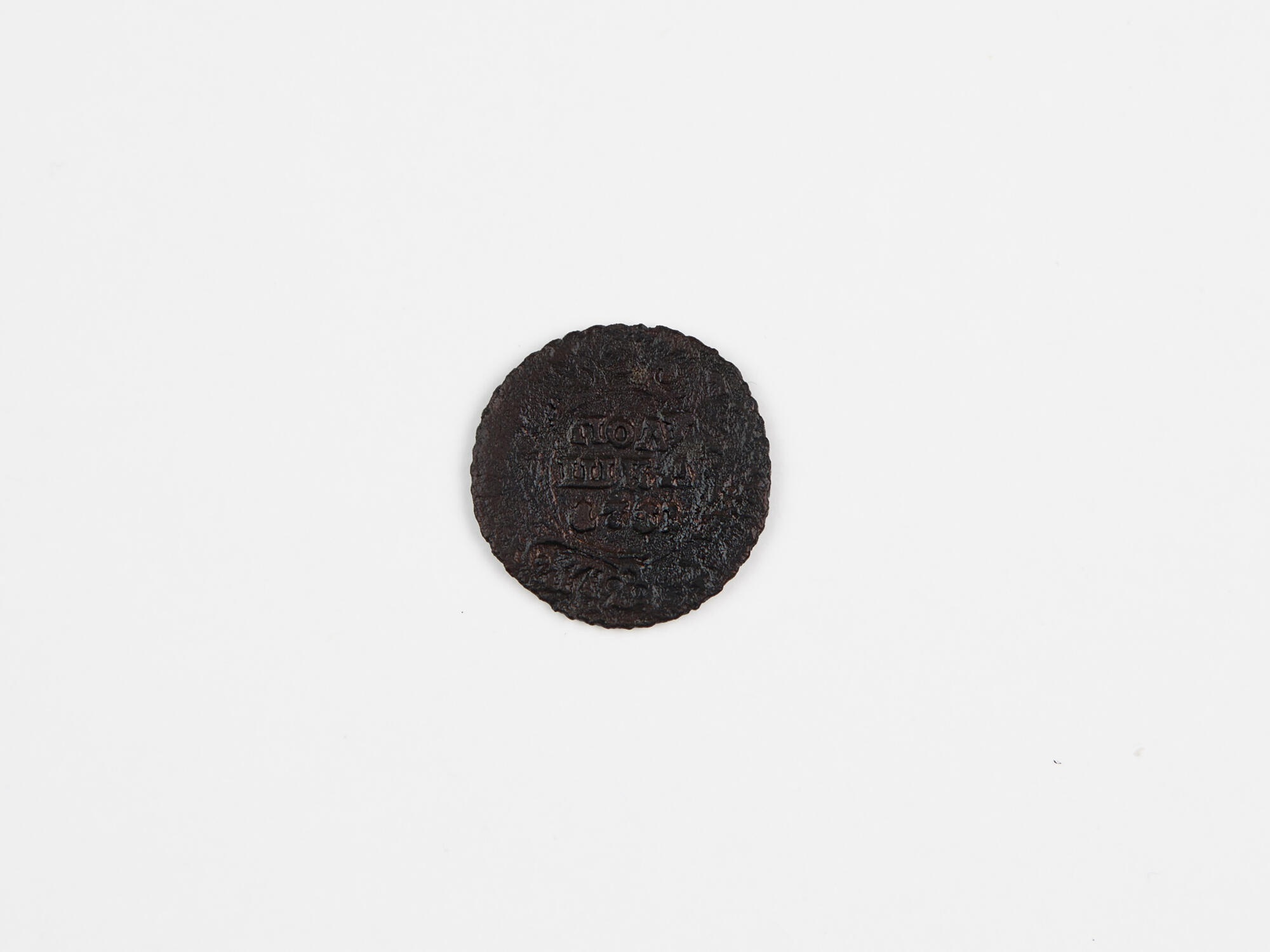The numismatic collection of the Demidov Historical and Memorial Museum presents a polushka coin, introduced into circulation in Russia in 1731.
The main metal for producing coins of Russia in the middle of the 17th century was silver. An attempt to issue copper coins, which would be in circulation on a par with silver ones, led to the almost complete disappearance of silver coins and to the outbreak of the Copper Riot in 1662. The second — more successful — attempt to introduce copper coins was made in 1700 by Peter I. The production of copper coins became part of the monetary reform, during which most of the familiar coins appeared: rubles, fifty kopecks, ten kopecks, five kopecks. At the very beginning of the reform, all these coins, including the kopeck, were minted from silver, and only the denga, polushka (half-denga) and half-polushka were made of copper.
The polushka coin is made of a copper containing alloy. It weighs 4.10 grams, and is 18.5 millimeters in diameter. The polushka is a Russian coin worth half of a denga. In historical written sources it is also mentioned under the name “poludenga” (the root “polu-” means “half”). The terms “poludenga” and “polushka” are synonymous, but it is likely that the first one is older. The polushka was made of silver and appeared in the late 14th century. From the reign of Vasily I, polushkas were minted in the Grand Duchy of Moscow with adjoining territories, as well as in the Rostov and Nizhny Novgorod-Suzdal principalities. In Novgorod, the coinage of this denomination dates back to Ivan III. During the reign of Vasily III, polushkas were also minted in Tver and Pskov. In 1535, the monetary reform of Elena Glinskaya standardized the polushka as a national denomination equal to half of the Moscow denga and quarter of the Novgorod denga (kopeck) and established a weight standard of 0.17 grams of silver.
The polushka continued to be minted as a silver coin until the reign of Mikhail Fyodorovich Romanov (1613–1645), when the amount of precious metals became negligible and made its production meaningless. The monetary reform of Peter the Great introduced the copper polushka as a denomination equivalent to a quarter of a copper kopeck. From 1700 to 1810 and from 1850 to 1866, these coins were stamped with the word “polushka”; and from 1839 to 1846 and 1867 to 1916 — with the inscription “quarter of a kopeck”.




